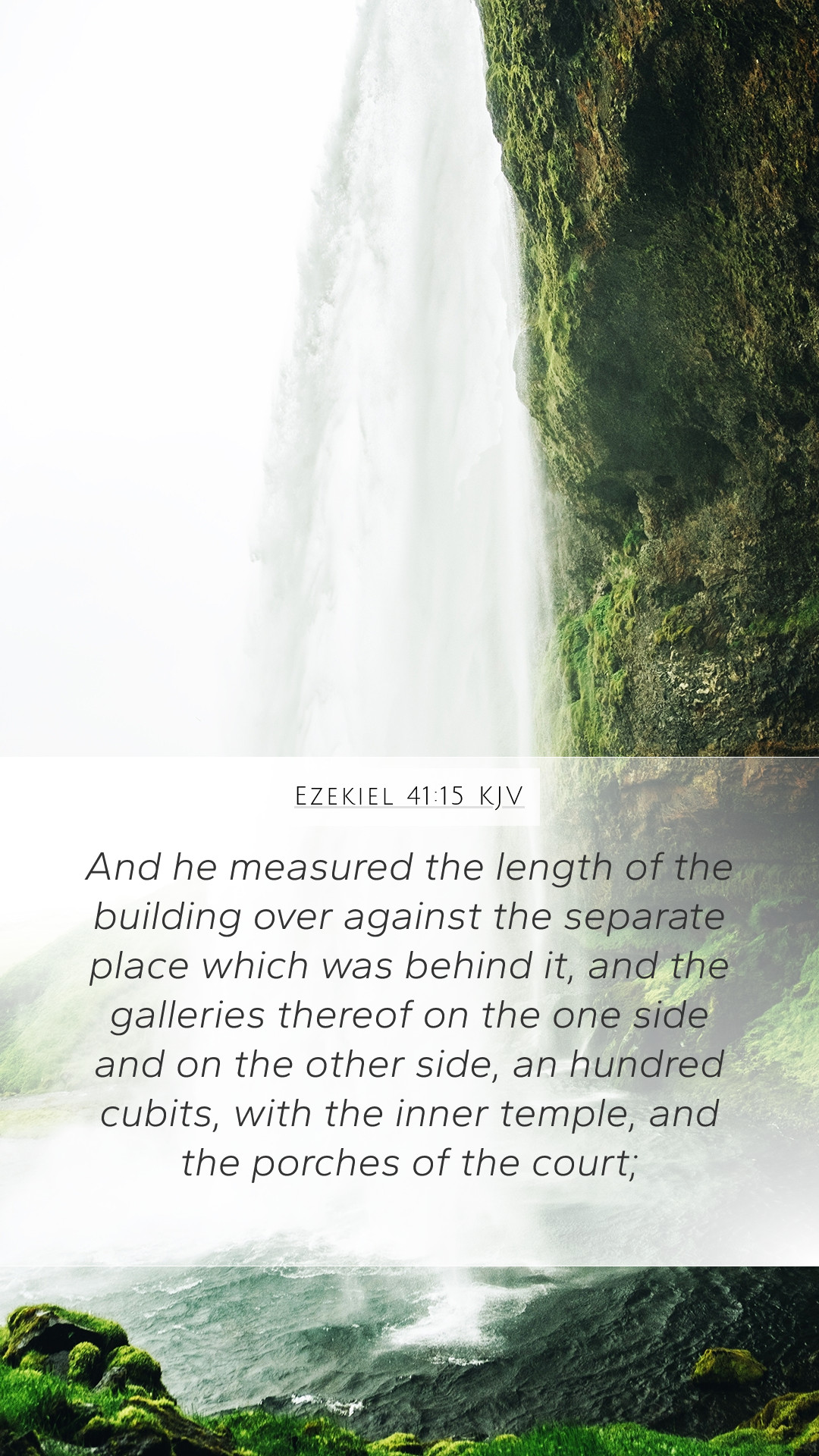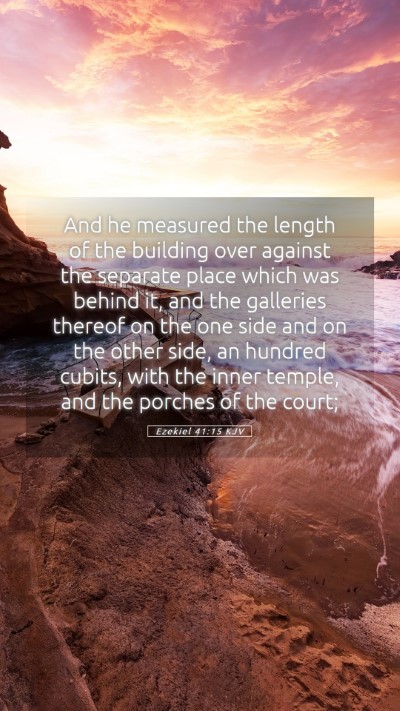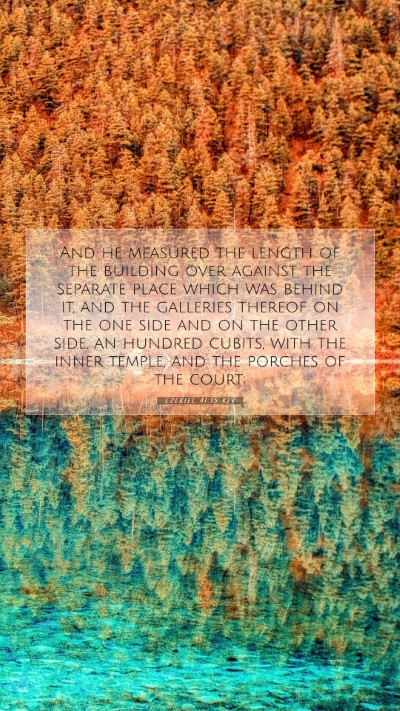Bible Verse Meaning and Interpretation of Ezekiel 41:15
Ezekiel 41:15 states:
"And he measured the length of the building over against the separate place which was behind it, and the doors thereof were toward the north; and the length was an hundred cubits, and the breadth fifty cubits."
Understanding the Context
The Book of Ezekiel is a prophetic text that describes visions and revelations given to the prophet Ezekiel during the Babylonian exile. Chapter 41 specifically focuses on the measurements of the temple, emphasizing the design and spiritual significance of this structure. In this passage, Ezekiel provides detailed measurements, reflecting the importance of precision in worship and the holiness associated with God’s dwelling place.
Insights from Public Domain Commentaries
Matthew Henry’s Commentary
Matthew Henry highlights that this verse is part of a larger description of the temple's structure. The measurements reflect not only the physical dimensions but also the atmospheric sense of God's presence. Henry suggests that the temple serves as a shadow of Christ—the ultimate dwelling place of God among humanity, showcasing a divine design with purpose and intention.
Albert Barnes’ Notes
Barnes notes that the specifics of the measurements signify the awe-inspiring presence of God. He explains that the separate place—likely a reference to the most holy space—underscores the distinction between the sacred and the common. Barnes emphasizes the need for separation in worship, indicating that holiness must be maintained in God’s presence.
Adam Clarke’s Commentary
Adam Clarke adds that the dimensions serve as a reminder of God's sovereignty and majesty. The mention of 'north' could suggest that the temple's orientation has spiritual implications, as north often symbolizes judgment in Scripture. Clarke encourages readers to view these measurements as significant indicators of the orderliness and perfection of God's design for sacred spaces.
Symbolism in Ezekiel 41:15
- Measurements: Represents the order and perfection of God’s plans.
- Temple Structure: A foreshadowing of the ultimate spiritual temple—Jesus Christ.
- Separate Place: Illustrates the importance of purity and holiness in worship.
Application of Ezekiel 41:15
Understanding this verse provides insights for modern worshipers concerning the seriousness of how we approach God. It stresses the need for reverence when entering into sacred spaces, both physical and spiritual. Ezekiel's visions encourage believers to reflect on the integrity of their worship practices and the significance of drawing closer to God's holiness.
Conclusion
Ezekiel 41:15 serves a dual purpose: it is a literal measurement of the temple and a metaphorical reminder of God’s presence amongst His people. As Christians study this passage, they should consider the implications it holds for worship, the need for holiness, and the importance of living according to God's divine order.
Cross References
- Ezekiel 40:5 – Description of the outer measurements of the temple.
- 1 Kings 6:2 – The description of Solomon's temple structure.
- Revelation 21:15-16 – The measurements of the New Jerusalem.
Keywords for Further Study
Those seeking greater Bible verse understanding may wish to use the following keywords for study:
- Bible verse meanings
- Bible study insights
- Biblical exegesis
- Understanding Scripture
Engaging in Bible Study
For those part of Bible study groups or engaged in online Bible study, the insights gleaned from Ezekiel 41:15 can foster rich discussions about the nature of God’s presence and the importance of temples in biblical history. Utilize Bible study tools, resources, and guides to dive deeper into the significance of the temple and its relevance to contemporary faith practices.


